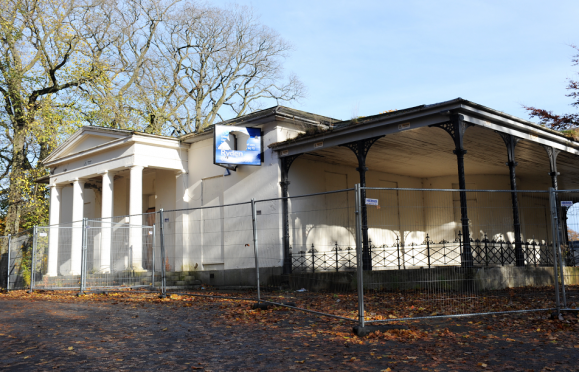Ancient churches, castles, historic hospitals, Victorian schoolhouses and former military control towers are among the hundreds of buildings deemed “at risk” across the north and north-east.
Historic Environment Scotland’s latest at risk register contains 780 from across Grampian and the Highlands – a third of the list.
Last night, owners of historic buildings were urged to look at ways to restore them instead of opting for the cheaper option of demolition.
Some of Aberdeen’s most treasured buildings, including Woolmanhill Hospital, Bon Accord Baths and the Triple Kirks are among the 54 on the register, with Victoria Road Primary listed as being in “critical” condition – the highest risk rating.
And while work is under way to breathe new life into some of the properties, such as the Broadford Works and the Triple Kirks, others like the A-listed Westburn House have been left to crumble.
Last night, Lord Provost Barney Crockett, who also serves as the vice-chairman of the local heritage trust, said: “We have an unmatched built heritage in the city, and while that brings tremendous benefits, there are also undoubtedly problems too.
“The maintenance costs can be huge and it is nearly always cheaper to knock something down than to renovate it.
“But as a city council we don’t want to do that and encourage owners to look at grants available for maintenance.”
The city council has recently launched a drive to preserve the image of the Granite City by encouraging the use of locally sourced materials for repairs.
In Aberdeenshire there are 264 buildings on the register, including Strichen Town Hall and Kinloch Castle, with 29 listed as critical while the Highlands – by far the largest council area – has 179 and four critical.
In Moray, 87 feature on the list, with eight deemed critical.
Orkney, the Western Isles and Shetland also feature with 86, 75 and 35 on the at risk register respectively.
Craig Wilson, who is a trustee of numerous preservation trusts and a member of the Society for the Protection of Ancient Buildings (Scotland) Committee, suggested there were several reasons properties could end up on the at risk register.
Mr Wilson, who also lectures with the building surveying team at the Robert Gordon University’s Scott Sutherland School of Architecture, said: “The issues that lead to their appearing on the list can be quite varied from vacancy, obsolescence, location, ownership, repair costs, condition, and ultimately vulnerability which applies to all.
“A vacant building rarely receives the same level of attention as an occupied one so inspections are not undertaken with the same regularity.
“In the north-east we have wonderful historic towns, indeed the vast majority of buildings on the register are of very fine quality craftsmanship, architectural merit, cut in stone and roofed with slate.
“These materials are now expensive to produce, not because the craftspeople charge a lot, but because this work is now more specialised and bespoke, it takes time to carve and mould a new piece of stone or cast new iron work.”
A spokeswoman for Historic Environment Scotland said: “The buildings at risk register is used to raise awareness of the regeneration of historic buildings through the promotion of their repair and reuse.”










